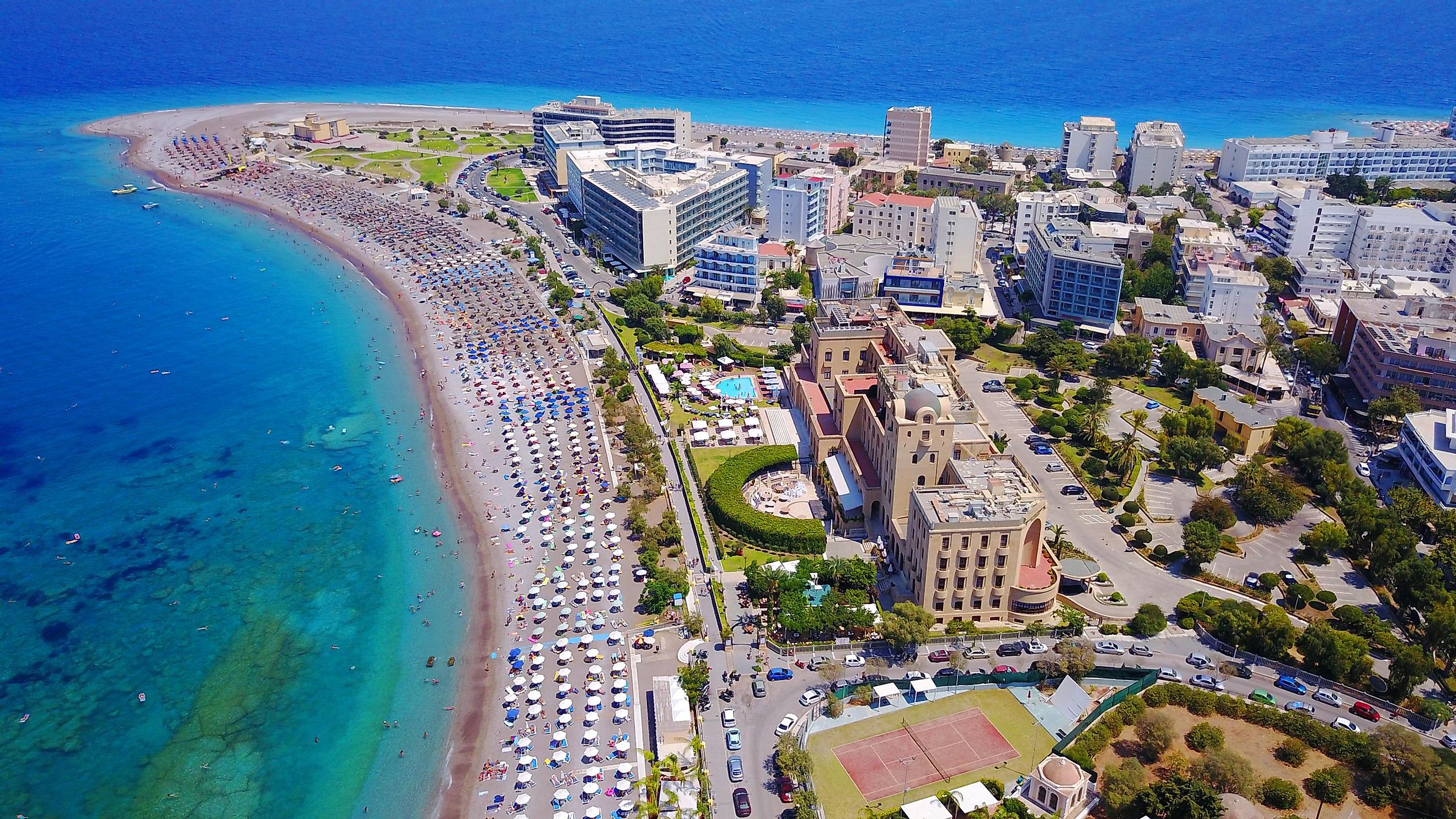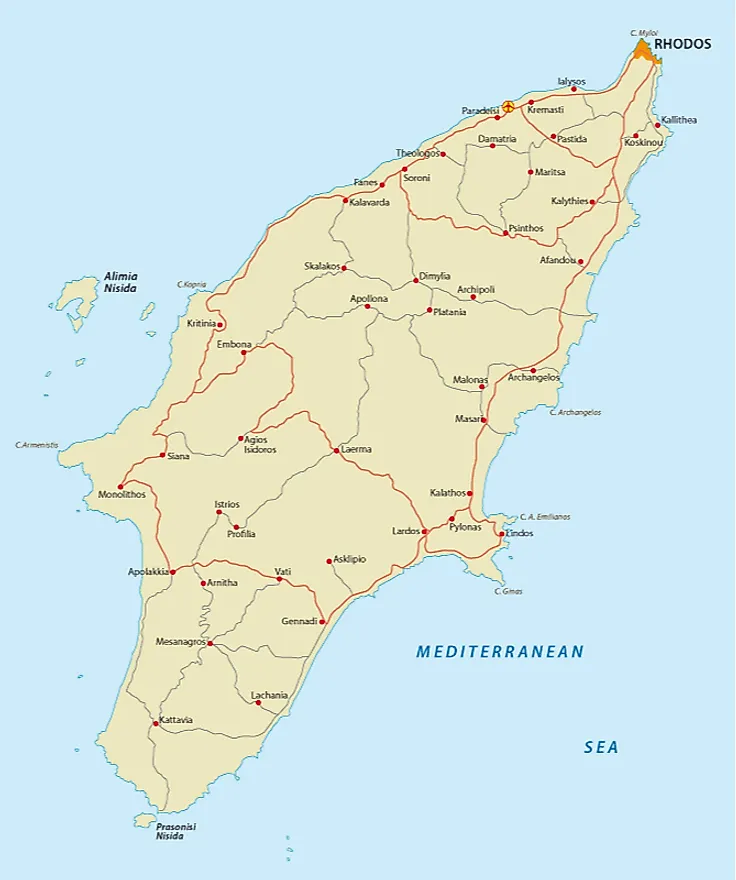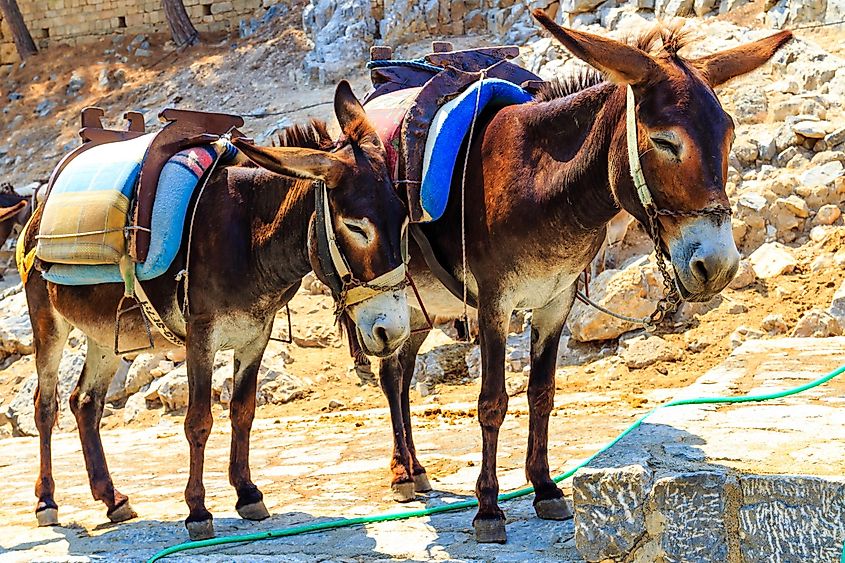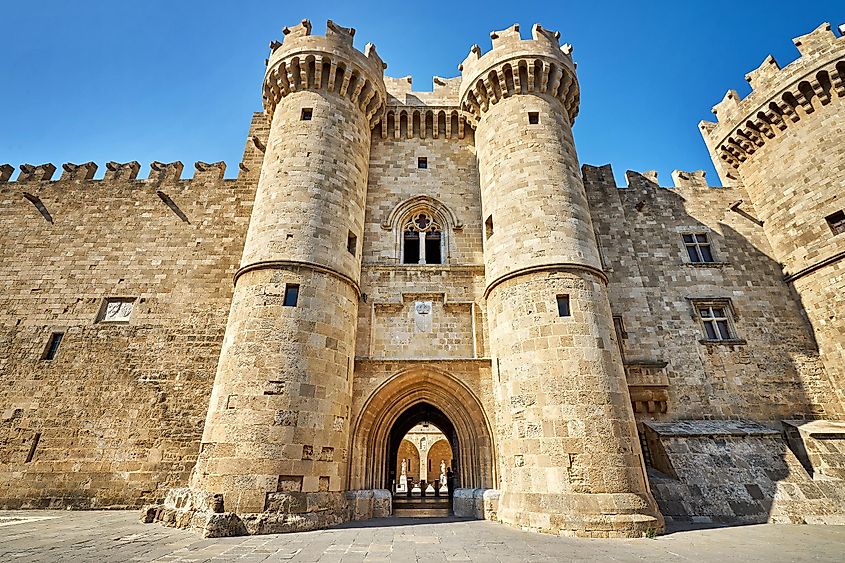
Rhodes, Greece
The sovereign nation of Greece (officially, the Hellenic Republic) located in southeastern Europe is strategically positioned at the crossroads of the continents of Asia, Africa, and Europe. The country comprises several islands of which about 227 islands are inhabited.
Covering a total area of 1,400 km2, the island of Rhodes is the largest island in the Dodecanese Island group. Rhodes is situated to the northeast of Crete island and southeast of the Greek capital, Athens. It is also the easternmost island in the Aegean Sea and is separated from Turkey by the Strait of Marmara. According to the Greek Kallikratis Reform of 2011, the island forms a part of the Rhodes regional unit under the South Aegean administrative region of Greece.
Geography

The island of Rhodes has a roughly spearhead shape and has a coastline of about 220 km. it stretches for about 79.7 km and has a maximum width of about 38 km. Located on the northeastern edge of Rhodes island is the city of Rhodes, the island’s principal town and a major urban center of Greece. The island is dominated by rugged hills which crisscross the island from northwest to southeast. Mount Attavyros, which rises to an elevation of 1,216 m, is the highest point on Rhodes island. There are several small villages on the island including Archangelos, Afantou, Embona, Faliraki, Haraki, Ixia, Kremasti, Koskinou, Lindos, Pefkos, Paradisi, and Trianta. Some of the significant beaches on the island include Anthony Quinn, Agathi, Faliraki, Kallithea, Lindos, and Tsambika.
According to the Köppen climate classification, the island of Rhodes experiences a Mediterranean climate with hot, sunny summers and mild and rainy winters. The average winter temperature on the island is about 10 °C whereas in summer the maximum temperature is about 35 °C.
Wildlife

The interior mountainous parts of the island are dominated by pine and cypress forests. Citrus fruits, vegetables, olives, wine grapes, and other crops are cultivated in the plains. Numerous flowering plants have also been recorded on the island. The Fallow deer is native to Rhodes island. The Petaloudes valley on the island is widely known for the numerous tiger moths that congregate there during the summer season.
Brief History

It is believed that in ancient times, Rhodes Island was infested with snakes. Hence, the island’s name may have derived from the term Erod which in the old Phoenician language means "snake." The island was first inhabited in the Neolithic period. According to Greek mythology, the island was originally inhabited by the Telchines. In the 16th century BCE, the Minoans started to inhabit the island. They were followed by the Mycenean Greeks who started to inhabit the island from the 15th century BCE. The Greek author Homer had mentioned in the Iliad, his famous Greek epic, that under the leadership of Tlepolemus, the inhabitants of Rhodes island had participated in the Trojan War. In the 8th century BCE, the island was invaded by the Dorians. The three major cities on the island, namely Kameiros, Ialysos, and Lindos, were built by the Dorians which along with the Greek cities of Cnidus, Halicarnassus and Kos Island formed a part of the Dorian Hexapolis.
The island was first occupied by the Persians and then by the Athenians in 478 BCE. The cities of Rhodes Island united to form a single territory, the city of Rhodes, in 408 BCE. In 332 BCE, the island was occupied by Alexander the Great under the Macedonian Empire. After the split of the Roman Empire, the island formed a part of the Eastern Roman Empire which eventually became the Byzantine Empire. After the Byzantines, the island was occupied by the “Knights Hospitallers” (Knights of Saint John of Jerusalem). Under their rule from 1310 to 1522, the island was converted to an impregnable fortress and was colloquially known as “The Island of the Knights.” The Old Town of Rhodes is considered one of the best-preserved medieval towns in Europe and has also been designated as a UNESCO World Heritage Site.
The Knights left the island in 1523 after Rhodes was captured by the strong army of Suleiman I in December 1522 and thereafter came under the rule of the Ottoman Empire. During the Italo-Turkish War, the island was conquered by Italy. Under the treaty of Lausanne in 1923, the island was officially handed over to Italy by the Turks. After the Second World War in February 1947, the Rhodes Island along with the other islands of the Dodecanese Island group was handed over to Greece.











